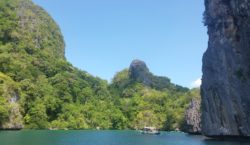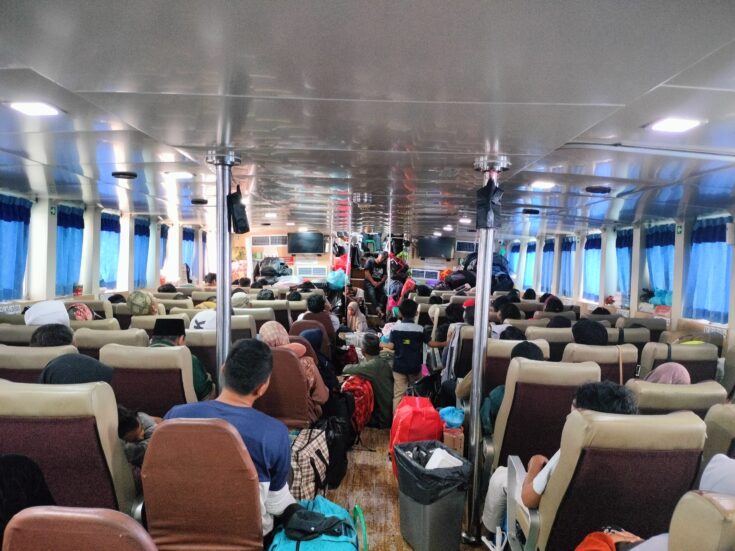
There are many remote areas in Southeast Asia. Some are so remote that getting there might be more of an adventure than actually being there. When travelling you often don’t understand what is happening around you. This is a story of one of these moments
There has always been a part of me that envied the backpackers in the 80’s and 90’s. The way that they had the opportunity to travel completely local with no internet connection to safe them when something went wrong. Essentially to be forced to talk to people around you and integrate. On my trip to the island Nongkat in Indonesia, I believe I got a taste of what I have been craving.
Working my way forward
I hurried into the car I had ordered. I was already covered in sweat after having just spend mere 10 minutes in front of my hotel waiting. The air condition was a a resuce from the hammering sun. I both cursed and praised my long pants and long sleeved t-shirt. They made my cooling down difficult, but they had also protected me from unwanted attention. At least to a certain extend as I couldn’t hide my light skin and blonde hair.
However, after a night in my small hotel room, which had no windows I was happy to be back on the move and observing my surroundings. I made my way to the ferry with snacks and loads of water in my bag.Preparing myself for the more than 11 hour ahead of me. I had never spent that long on the water before.
My destination was the small island called Nongkat. It is a part of a small Indonesian island group called Anambas. The island is privately owned by a small group of Danes, and I had been allowed to come and visit. Not many people make their way there, but on this journey another Danish girl was making her way as well.
I met her as a stumbled into the ferry terminal. I was balancing my freshly bought coffee and my backpack when i spotted another blonde in the local surroundings. She was going to the school to visit a friend.
In the beginning I was happy to have company, but also concerned about whether this would make me loose a part of the experience. I had assured my boss that this was a long and dreary trip which was just begging to be experienced and written about. A big part of that was “no hand holding”.
It turned out that I didn’t need to worry at all, because stepping on board this ferry, I quickly realized that this trip was going to be long and tough, and any kind of company would definitely be appreciated.
Our home for ten hours
The ferry was full to its brim with passengers. Sitting on the seats, sitting on the stairs, laying on the floor. Everywhere you looked people where desperately trying to make themselves comfortable. And so were we. We had a ticket that included a seat, but figuring out what seat it was, turned out to be quite a struggle. After being relocated the second time I caved and let the crew take my backpack to the rest of the luggage. My camera and my laptop. I could feel the anxiousness not to have it near me. We then embarked from the harbor of Batam in the ferry with at least 50 people if not more.
I had been worried that I would get seasick, and the sight of free bags hanging everywhere on the ferry did not make me more relaxed. I had bought some pills for motion sickness beforehand, but I didn’t want to take them unless I really needed to.
Luckily it didn’t seem like the boat was going to rock that much on the trip, and I settled into my seat. Starting to snack and listen to some music.
After short while my curious neighbor started asking questions about where I was from. I wasn’t surprised, as we were the only non-locals on the ferry and had already turned quite a few heads. After a bit back and forth, he started to offer us some of his snacks. In the beginning we thought that he just wanted us to try them, but suddenly I had the entire bag in my lap, and I had to be a bit firmer in my answer when he tried to offer me his lunch. He was also a bit worried about the trip he told me, as he easily gets seasick. He worked for an oil-company, and the last four years he had been flying to Terempa to avoid the ferry.
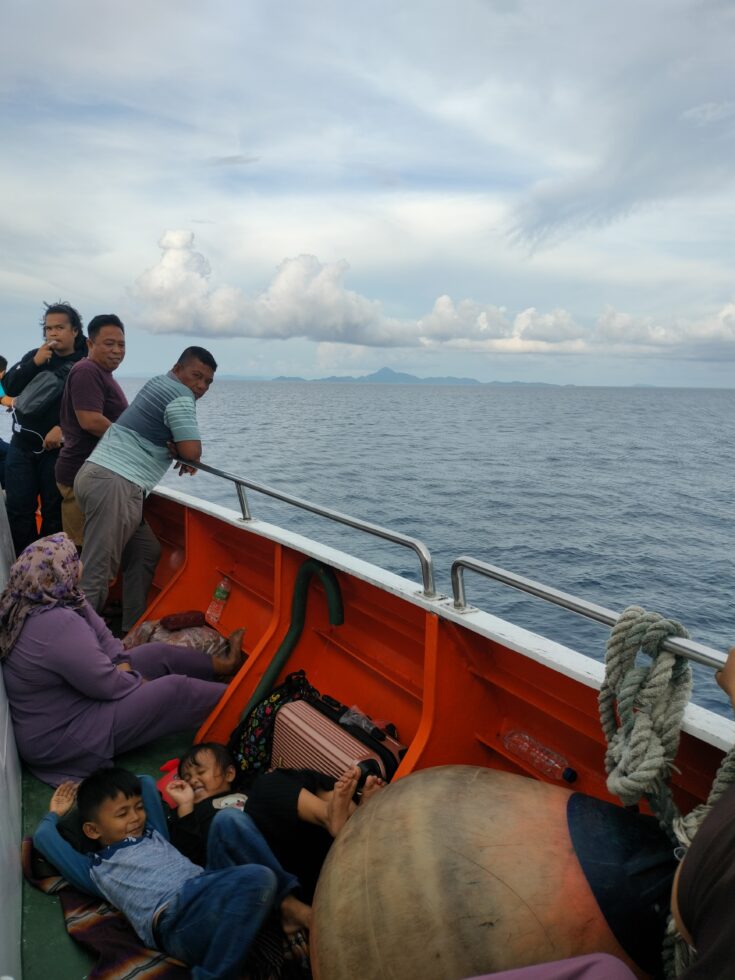
A whole world outside
Two hours in a had started to grow restless. With the many people in the ferry the temperature had started to rise. With my headphones in I was staring ahead slowly feeling the sweat staring to appear everywhere on my body. I had also quickly developed a love-hate relationship with the two-year-old sitting in the row in front of me as he kept swinging between being exceptionally cute and crying loudly. I looked at my fellow traveler in agony. So many hours ahead of us, and we had already discovered that we couldn’t get outside on the back of the boat. However, something had to be done. We had realized that someone was selling coffee in the front of the boat, so we decided to wake up our three sleeping neighbors to go in that direction of the boat.
When we arrived, we saw the dreaded signs of “no exit” on the doors to the decks when we had made our way through the sleeping children and adults laying on the floor on the way there. The disappointment must have been obvious on our faces, because one of the men looked at us and the door, and then defied the sign by opening it for us.
Clearly the sign was meant to be ignored. Outside there was full of locals smoking, enjoying the breeze and the view. We melted. Sliding down, so that we could sit and enjoy the wind. There still wasn’t much room, but there was air. We stayed there for hours. Acquiring a decent sunburn, but also so much more energy.
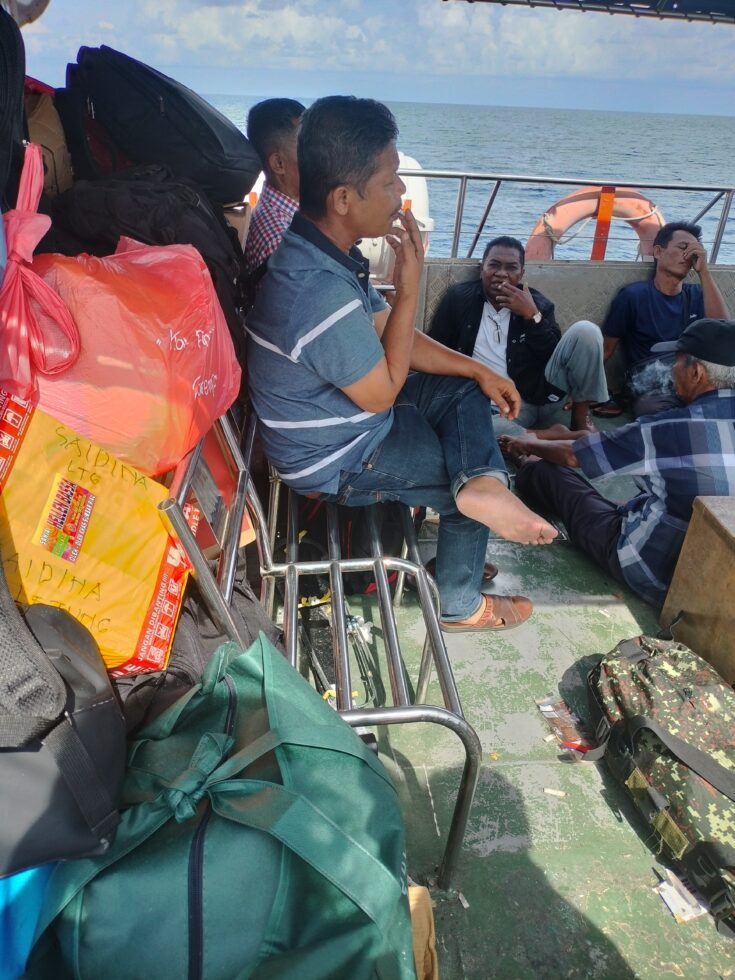
Temperature rising a bit more
The ferry had one stop on the route to Terempa. This stop was in Letong. For refreshments we had heard. We had returned to our seats, so that no one took them, when the pure chaos began.
The following 30 minutes was occupied with what can only be described as a bazar like vibe on the ferry. At least 30 salesmen made their way through the ship. The temperature quickly rose as the voices yelled of snacks and coconut water. Once again, we had to ensure our neighbor that we did not need more food as he wanted to buy us all that the salesmen had to offer.
As soon as the salesmen left the ship, we discovered the amount of trash scattered across the floor. We escaped once again to the outside deck, this time on the shaded side, and stayed there while the sun went down, and we arrived in Terempa.
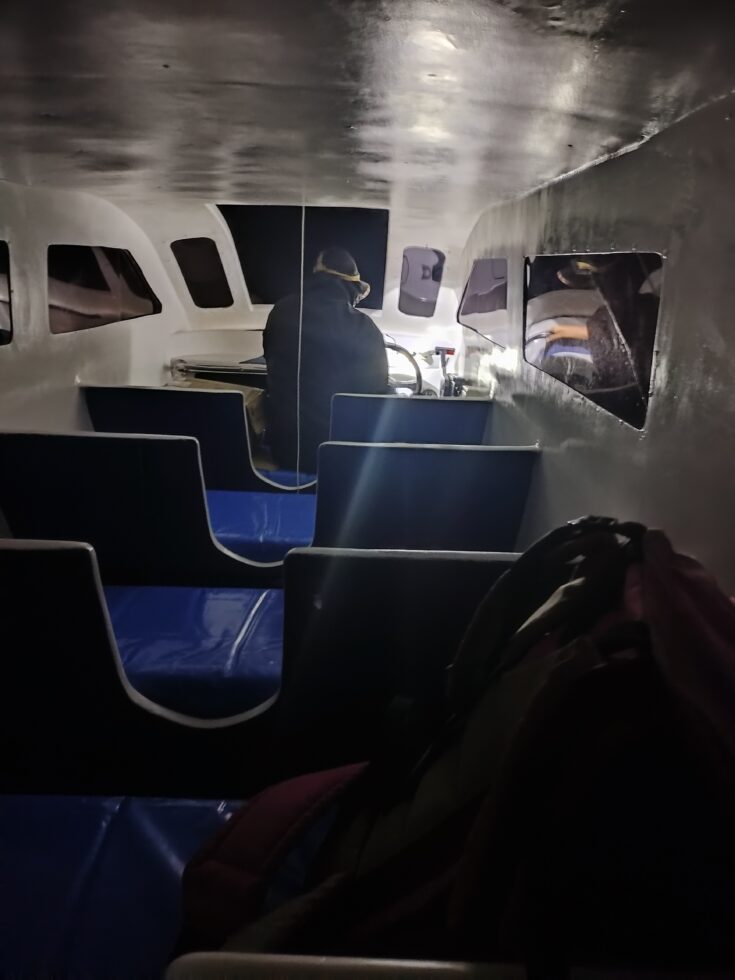
Ready, set and go
A message bipped in, as we arrived in Terempa:
“You have to leave the harbor, walk 100 meters, and the turn left to a mini harbor.”
Apparently, there would be a speedboat with a driver called Mr. Hinh. He wouldn’t be able to speak a word of English, but he would take us to the island called Nongkat. This was where the Danish “Højskoleøen” was located.
After a few wrong turns in what was a much larger city than we expected, we found the mini harbor. However, after talking to a few of the sailors they told us that Mr. Hinh was sleeping.
We just kind of paused and sat down. This was the moment that I realized that I really didn’t have a direct number for the school. Luckily my travel companion had for the friend she was going to visit, so at about 8 in the night we embarked on yet another trip. This time on motorboat for 45 minutes with Mr. Hinh steering.
Going through the darkness with the wind in my hair and a massive amount of stars above me, I started to mentally prepare myself for meeting the people at the school where I would stay for a full week.
The trip on the speedboat was intense, as we had to slow down, and Mr. Hinh had to shine his light into the sea to see where the reefs were. I was amazed. I don’t think I have ever seen such clear water in my life. We passed both sea turtles and machinery in the night before we saw the twinkly lights of our destination. After more than 11 hours on the move, we had arrived at the island of Nongkat. Højskoleøen. Now the real work of the article could begin.

